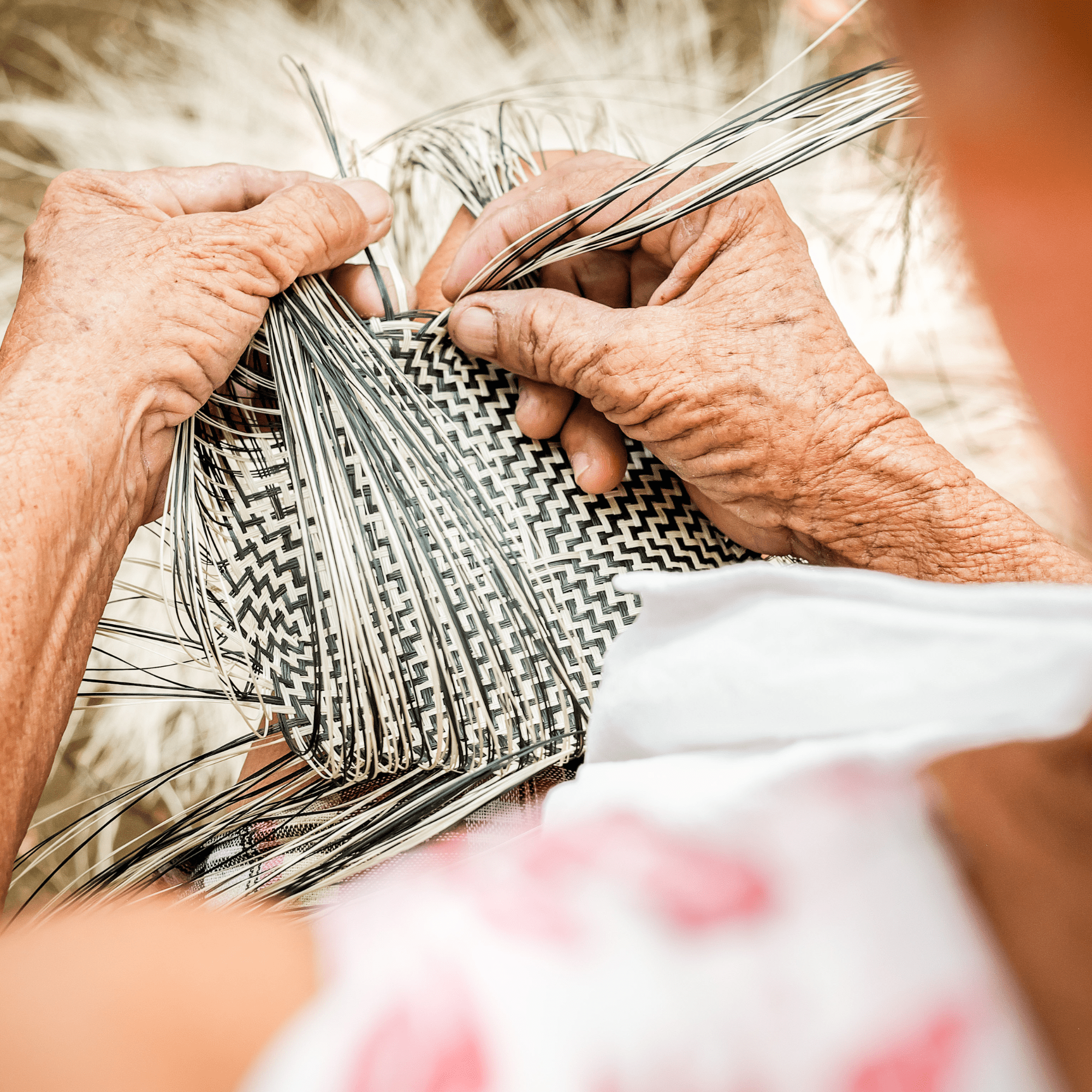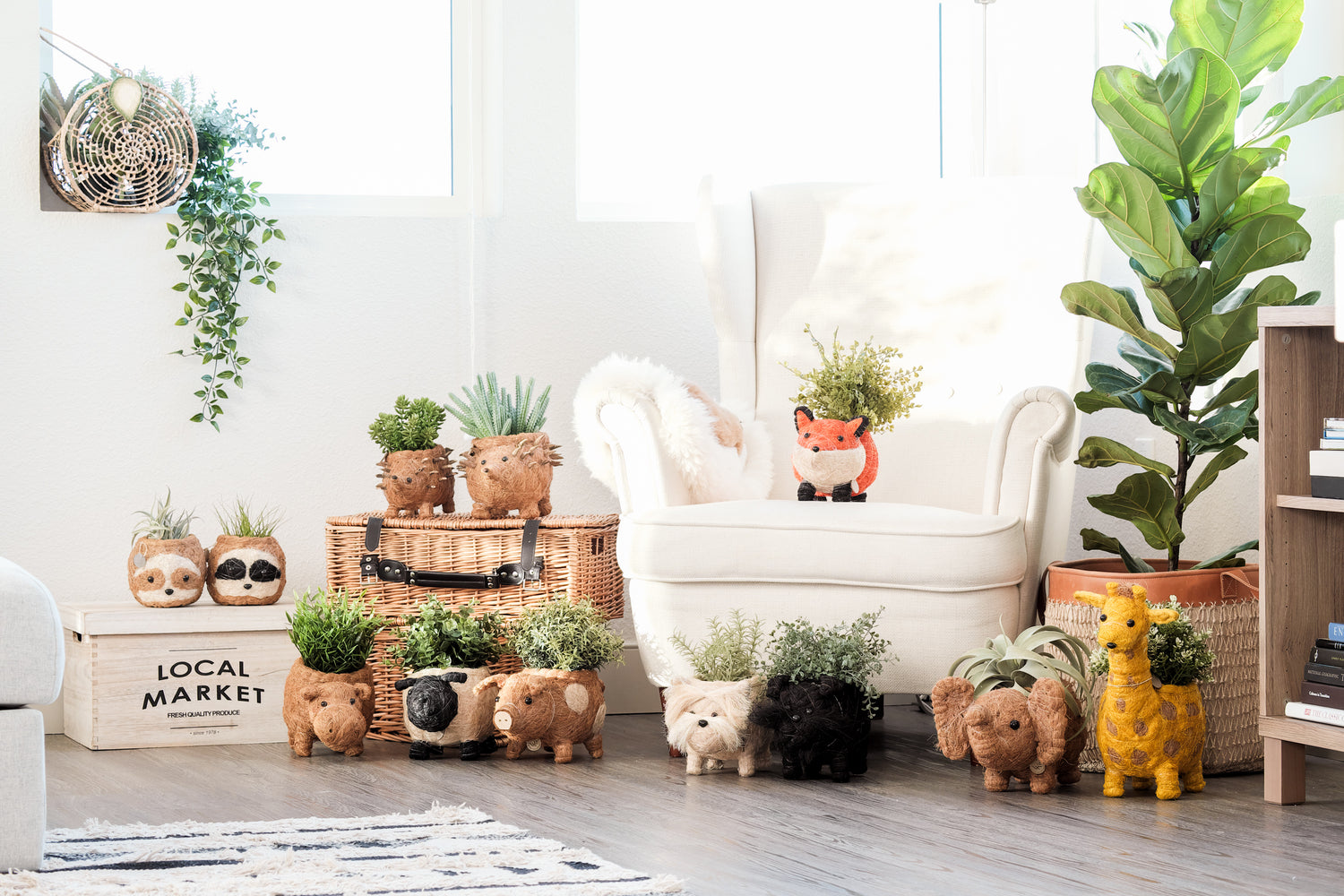Weaving is an age-old craft. It is woven intricately with Filipino culture and heritage. In Filipino, people call traditional weaving in the Philippines habi. It reflects the nation's stories and histories. Every warp and weft reflects the life and lifestyle of the artisan. It also mirrors the beliefs, traditions, and values surrounding him.
It is still unknown exactly how and when weaving started in the archipelago. Archeologists found stone tools for preparing barkcloths. These discoveries date back to the late Neolithic period. Evidence was also found at Arku Cave in Peñablanca, Cagayan, and Sagung Cave in southern Palawan. Scholars have determined that these discoveries are from the Neolithic Period. Some of them date back to 1255 to 605 BC.
Anecdotal accounts cite that weaving is a skill bestowed by the gods. The Ifugao people of the Cordillera Mountains believe Punholda'yan introduced weaving to them. The B’laan of Mindanao attributes the origin of their weaving practice to the goddess Furalo.
Weaving Ways

There are basic weaving techniques that govern the global weaving community. There are three basic weaves:
-
Plain Weave:
This is the most commonly used weaving technique. Each filling yarn passes over and under the warp yarns. The order is reversed in alternating rows. -
Twill Weave:
This type of textile weave has a characteristic diagonal pattern. Passing the weft thread over one or more warp threads creates a design. -
Satin Weave:
Using four or more fill or weft yarns creates this fundamental type of textile weave. The weft floats over a warp yarn, and four warp yarns float over a single weft yarn.

Aside from the fundamental type of weaves, there are also complex and novelty weaves. As times pass and skills develop, weavers have discovered so many other ways to weave. These discoveries led to a plethora of products, designs, and textures. Some examples of complex weave techniques are the following:
- Crepe Weave
- Color & Weave Effect
- Dobby Weave
- Double Cloth
- Extra Yarn Weaves or Surface Figure
- Jacquard Weave
- Lappet Weave
- Leno Weave
- Swivel Weave
- Tablet Weave
Woven Wonders
In the Philippines, weaving techniques have evolved and passed down from generation. Almost every region in the archipelago has its take on weaving. Every woven piece has a distinct function. Each has a unique personality that sets it apart from other regional products.
Here are some of the most notable traditional weaving techniques in the Philippines.
1. Handloom Weaving

As the name implies, this is a technique where weaving is done by hand. The traditional weaving loom is made of bamboo and strings. These looms are usually located in the weavers’ homes. This technique is a meticulous process. that requires masterful coordination.
Handloom weaving uses two sets of yarn. The warp (lengthwise strings) and the weft (horizontal strings) are interlaced. This is done using either the frame loom or pit looms.
Regional weaving communities use this technique. In Aklan, they make piña barongs and in Iloilo, they make hablon textiles. You can also find clutches and other items made using this technique.
2. Backstrap Loom Weaving

Photo by Minzuu
This weaving technique uses backstrap looms. It is an intricate weaving technique that requires impeccable coordination, patience, and skill. This type of loom is found in the Luzon and Mindanao mountain regions.
This technique uses a rectangular loom. It is attached to a sturdy tree, post, or stationary object. Cords are then held in place between the loom frame and the weaver’s body. The way this is set up gives the weaver a lot of control over the fabric.
It takes years for one to master this technique. It involves the methodical picking of ultrafine, colored threads. Then the weaver has to align them section per section. It is a meticulous process. Yet one that is much appreciated.
3. Basket Weaving

Basket weaving is another traditional craft. It has passed down through the centuries like handloom and backstrap weaving. Basket weaving is still practiced by skilled artisans around the archipelago.
Basket weaving techniques vary per region. Common basket weave styles include coiling, plaiting, and twining. Traditional basket weaving also involves the use of natural fibers. This includes organic materials like abaca, rattan, and sinamay. Handwoven products like bags, baskets, and other containers use the basket weaving technique.
4. Mat Weaving

Another traditional weaving technique is mat weaving.
Highly skilled artisans create intricate textiles using this technique. They interweave small pieces of material – usually Pandan leaves – into larger mats. People braid and loop the thread by hand to create beautiful patterns. The end product comes out with captivating designs and vibrant colors.
One of the most popular products produced by the mat weaving technique is banig. It is a traditional handwoven mat in the Philippines usually used as a floor or sleeping mat. This technique makes other products like bags, cushion covers, and place mats.

The clamor for handwoven products is on the rise. This is especially true for those that are sustainably sourced and ethically made. Sustainable brands like Likhâ have made it a point to celebrate centuries-old craftsmanship. We do so by intertwining contemporary concepts with traditional techniques. This attention to design, tradition, and inclusion delivers sustainable products without compromising quality. These efforts preserve the rich Filipino culture, heritage, and traditions.



